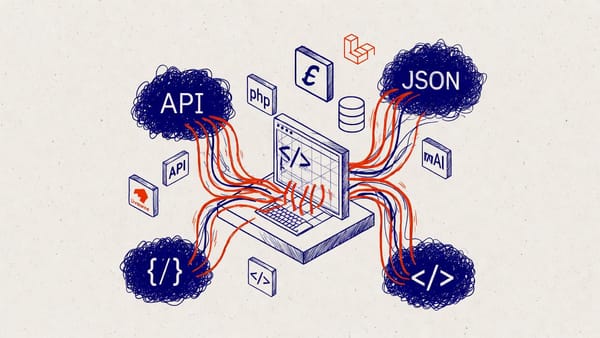Developer’s Guide to Using Sitefinity’s New AI Features
How Sitefinity 15.3 empowers developers and marketers with built-in AI tools.

Introduction
Progress released Sitefinity 15.3 in April 2025, marking another major step toward intelligent, data-driven content management.
The release brings AI-assisted content creation, semantic media search, and deeper personalization capabilities, all accessible through APIs and extensibility points that developers can build on.
For .NET developers, Sitefinity’s new AI layer is not just a productivity boost — it’s an opportunity to integrate machine learning and natural language features directly into enterprise-grade workflows.
“Smarter CMS, same .NET backbone.”
— Progress Sitefinity 15.3 Release Notes
Overview of the New AI Capabilities
AI-Assisted Content Creation
Marketers can now use AI prompts directly within the Page Editor to draft, rewrite, or expand content.
Under the hood, this feature relies on a provider-based model that developers can extend — for instance, by connecting to Azure OpenAI, OpenAI API, or a custom language model.
Configuration lives in App_Data/Sitefinity/AI/config.json, and developers can register custom services via dependency injection.
AI-Powered Media Search
The Media Library now supports semantic search, allowing users to find assets through natural-language queries like:
“Show me blue hero banners with people.”
Behind the scenes, Sitefinity indexes metadata and embeddings, using Progress Cognitive Services or other search backends.
The core logic runs through the MediaSearchService interface, which can be replaced or extended.
AI-Assisted Personalization
Sitefinity’s Digital Experience Platform (DXP) integrates AI to refine visitor segmentation and content recommendations.
The personalization engine can learn from behavioral data and dynamically adapt segments.
Through the SDK, developers can inject their own ML scoring logic or connect external recommender systems.
Extending the AI Features
Replacing or Augmenting the Default AI Provider
Developers can implement the IAIProvider interface to connect Sitefinity to any external AI service:
using Telerik.Sitefinity.AI.Abstractions;
public class CustomAIProvider : IAIProvider
{
public string GenerateText(string prompt, IDictionary<string, object> context)
{
// Example: connect to OpenAI API
var response = HttpClient.Post("https://api.openai.com/v1/chat/completions", new {
model = "gpt-4",
messages = new[] { new { role = "user", content = prompt } }
});
return response.Content;
}
}
Register your provider in Startup.cs:
services.AddScoped<IAIProvider, CustomAIProvider>();
This approach lets you customize tone, model, and data sources without modifying the core CMS.
Using the AIService Directly
You can call the AI engine from your own code — for example, to generate placeholder content or summaries:
using Telerik.Sitefinity.AI;
var aiService = SystemManager.GetManager<AIService>();
var text = aiService.GenerateText("Write a short intro about remote work benefits.");
contentItem.SetValue("Body", text);
contentItem.SaveChanges();
This API is ideal for bulk content seeding or internal tools that automate editorial workflows.
Semantic Media Search via API
using Telerik.Sitefinity.Media;
using Telerik.Sitefinity.Media.Abstractions;
var mediaService = ObjectFactory.Resolve<IMediaSearchService>();
var results = mediaService.Search("images with people smiling in office", 10);
You can override the default implementation of IMediaSearchService to integrate with your preferred vector search backend or cloud AI service.
AI Hooks for Personalization
Through the Personalization API, you can hook into Sitefinity’s rule evaluation engine:
- Extend
RuleEvaluatorto override default decision logic. - Integrate your own ML model outputs for scoring visitors.
- Dynamically assign segments based on real-time data.
For example, you could assign a “Tech Enthusiast” segment when a visitor frequently views AI-related content.
Configuration and Security
AI providers such as OpenAI or Azure AI require API keys.
Sitefinity stores these credentials securely in the encrypted settings store.
Best practices:
- Keep all integrations server-side to protect API keys.
- Restrict AI features to specific backend roles through permissions.
- Review the
AI_Audittable, where all AI interactions are logged for transparency and compliance.
Best Practices for Developers
- Treat AI integrations as stateless service layers.
- Cache frequent responses to minimize API cost.
- Handle rate limits and network errors gracefully.
- Avoid sending personal data or identifiers to external AI APIs.
- Start small — extend the built-in provider before building custom frameworks.
Looking Ahead
Progress has announced upcoming features for the next Sitefinity versions:
- AI-assisted translations via Azure Translator.
- AI workflow suggestions (automatic content reviews, metadata generation).
- An extended AI SDK to simplify third-party LLM integration without custom adapters.
These enhancements confirm Sitefinity’s direction toward a flexible, AI-driven DXP that supports both marketers and developers.
“We’re not adding AI for novelty — we’re embedding it where it adds the most value.”
— Progress Engineering Team, 2025 Roadmap
Conclusion
Sitefinity 15.3 shows how AI can integrate naturally into a .NET-based CMS — not as a bolt-on tool, but as a first-class service.
By exposing AI through clean interfaces like IAIProvider and AIService, Progress allows developers to design intelligent, automated, and adaptive web experiences.
If you already build with Sitefinity, this release is a perfect opportunity to explore what AI can automate — from content creation to asset discovery — and how those capabilities can extend into your custom modules.
I offer hands-on consulting to help you resolve technical challenges and improve your CMS implementations.
Get in touch if you'd like support diagnosing or upgrading your setup with confidence.






